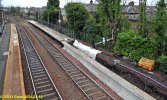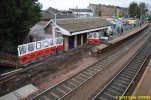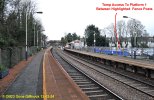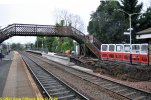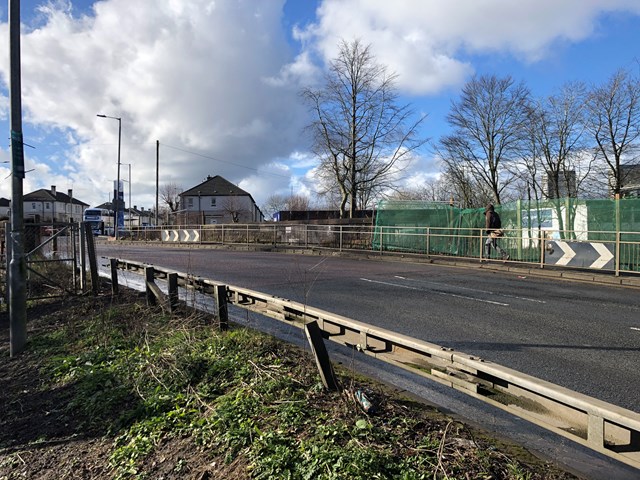Charged up
Member
The 2020 TS - Decarbonisation Action Plan (DAP) to remove DMUs across Scotland's Railway is to be applauded and the swift removal of C153s, C156s, C158s & HSTs, in particular, will be welcome news as they are wholly unsuitable for a modern, cost efficient railway operation. The problem, I see, is the preference towards mass OHL installation which is unaffordable and unachievable rather than putting greater focus and commitment toward rolling stock solutions to help deliver the 2035 target.The blinkered attitude Transport Scotland, NR and Scotrail have the long term whole network decarbonisation plan in mind which needs Barrhead and beyond electrified - whether you like this plan or not doesn't matter - they have their eyes on the prize not distractions. They aren't worried about maximising local improvements (and presumably local house prices) in the short term with shiny new non-existent trains. Local councils elsewhere in the UK have self funded P&R sites for decades which is possibly why SG were surprised they were funding it.
Rail operators everywhere (GB and Europe) know they will get far better BEMUs by waiting several years, "pedestrian" leads to better outcomes over the whole asset life. (The recommendations gathering process for standards isn't complete yet let alone the standards writing process for the standards the battery and charging elements would be designed to).
The conjoined GLC HL to Barrhead/ East Kilbride electrification was announced in March 2018 and then confirmed within the Network Rail's CP6 (2019-2024) delivery period. We are now faced with these lines going fully "live" in December 2025 with a token electric service on the EK line, due to lack of EMUs, more than seven years since it was first announced. I'm struggling to see how the "whole network" will be anywhere near complete by the end of 2035 given the output evidence, so far, notwithstanding the price of around £60-£65M for c.23kms of OHL - what ever happened to £1M per stk for OHL?
I still have no idea why the branch line to EK was seen as a "priority" route when continuing OHL installation south from Barrhead towards Kilmarnock would have offered better vfm and greater operational flexibility. In addition to this redirected OHL project, introducing BEMUs to run along the 7 miles on the EK branch would still allow the withdrawal of C156s and quicker emission reduction without the need for OHL installation disruption and future maintenance costs. The conversion of existing fleets, such as C380s or C385 could have offered an interim, quicker solution alongside securing EMU cascades from elsewhere to allow DMU removals by December 2025, if TS had allowed ScR & NwR to think out of the box. The growing battery technology sector within Scotland could have been used to support such developments, with obvious economic spin offs, for future larger fleet procurement projects across the GB network in the next few decades. As it is passengers will still largely travel on nearly 40 year old diesels "under the wires" due to investment being directed towards infrastructure rather than battery powered rolling stock which other GB rail operators are now rolling out.
In addition the inability to commence procurement for new EMUs, including those with on board batteries, is another example of the failings of TS/ SG to admit that de-carbonisation doesn't just mean ELECTRIFICATION! Procurement of new non-diesel fleets has been at the "starting line" for around 3 years and if it had started in 2021/22 the off lease of life expired fleets C318s/C320s/C334s plus C156s/C158s would have been possible by the mid 2020s but now passengers and ScotRail will have to put up with substandard, unreliable trains for much longer. The additional cost, diesel emissions and operational inefficiencies that will arise from not moving towards standardised fleets is puzzling, given the on-going focus on the cost of the railway, plus the rapidly diminishing supply chain to support the various 25-35+ year old fleets.
South Lanarkshire Council (SLC) has been a long standing and consistent supporter of improving access to the railway (i.e. the re-opened Larkhall line) and has been an enthusiastic partner in the Hairmyres station relocation project from day one. It's track record over the last 15 years in delivering new P+R sites at Carluke, East Kilbride, Newton & Cambuslang demonstrates previous commitments and outputs which have attracted more passengers to the railway, help reduce longer car journeys and on-going NwR/ TS budgets.
The proposed new relocated interchange hub facility to be built, managed and operated by SLC, using SPT funding, was a significant part of the local council's 2024/25 budget but it was removed without any consultation. The 2023/24 SPT capital spend is c. £52m including a commitment of £14.5m investment to local authorities. This supports Councils in their delivery of active travel and local projects, such as Park & Ride and interchange works contributing to the regional and national transport strategy outcomes.
The withdrawal of these funds, for better passenger facilities, whilst still ploughing on with expensive OHL installation shows the lack of political "joined up thinking" plus the ability to look for more radical outcomes. This will also undermine the aspirations to encourage modal shift, enhance station accessibility, deliver better rail/ bus interchange, reduce car usage and attract more passengers to the railway. As with many aspects of the delivery of transport projects in Scotland the laudable overarching commitment and high level targets will not be achieved when decisions are made for the short term and where safe thinking is prioritised.

